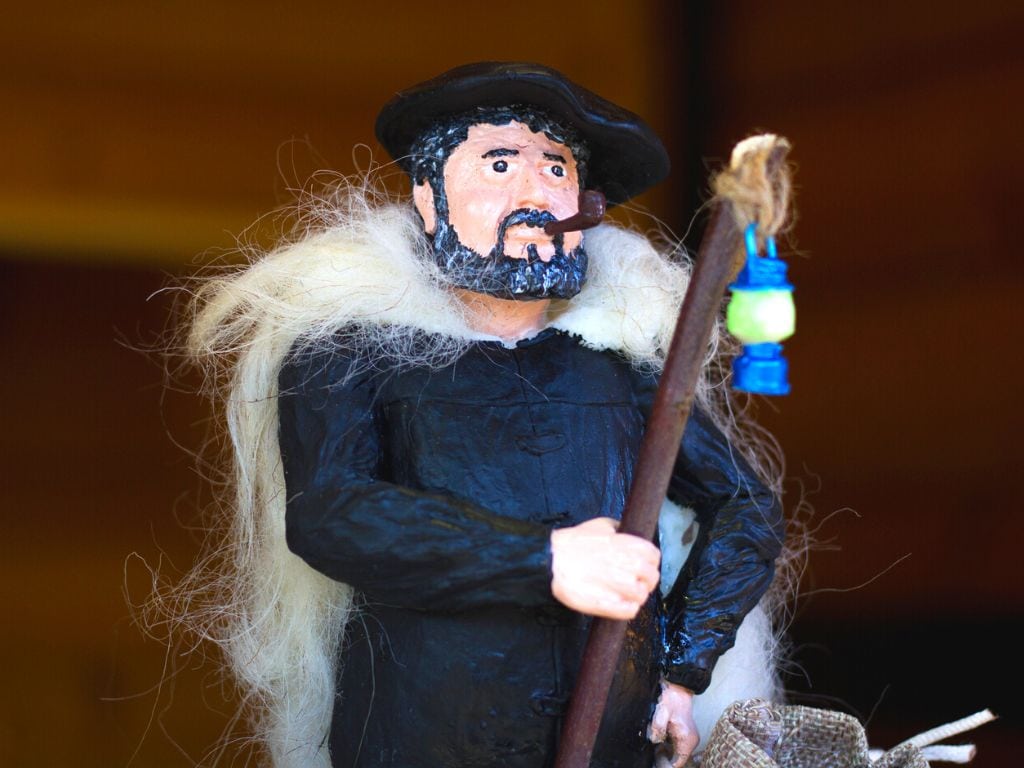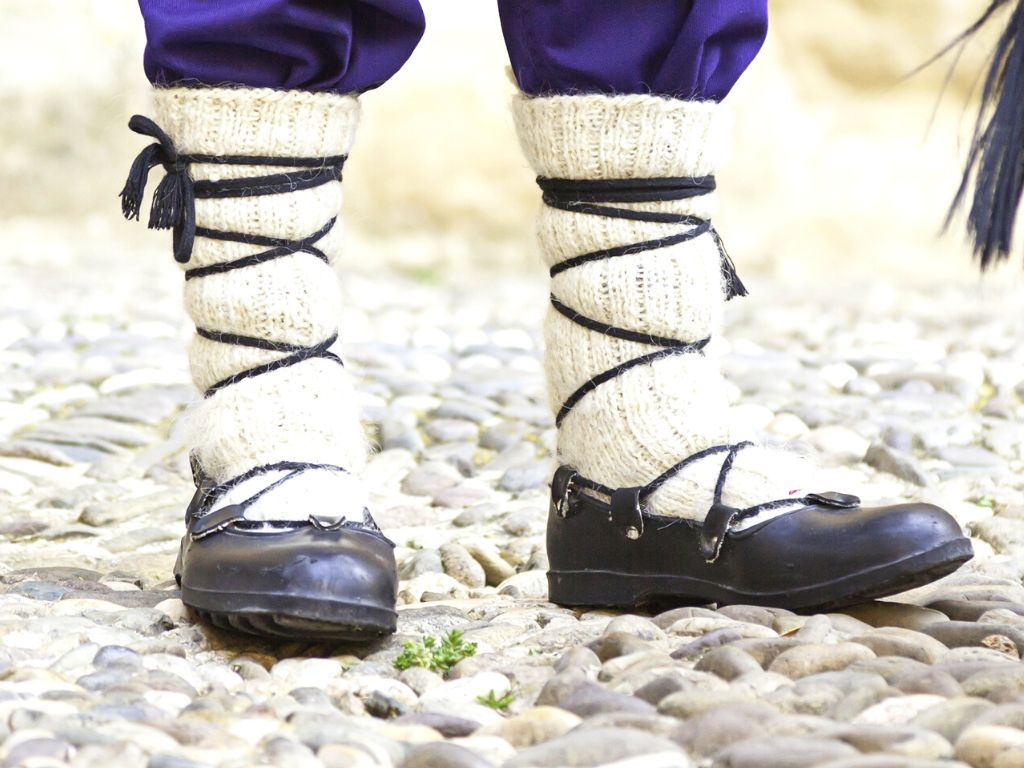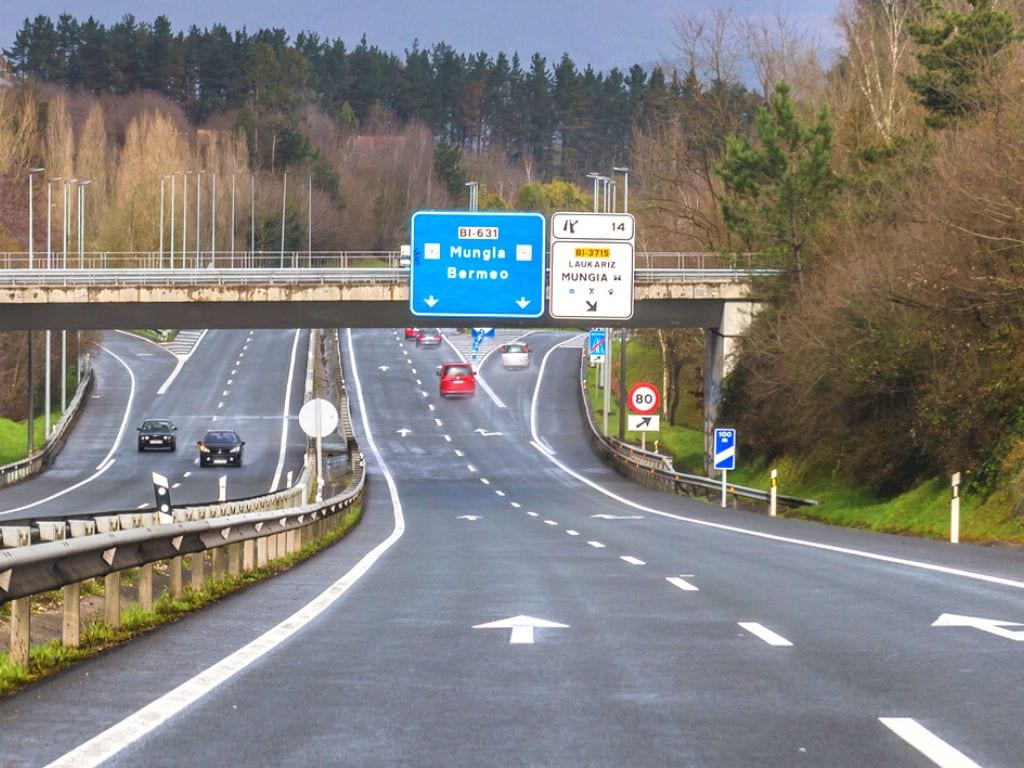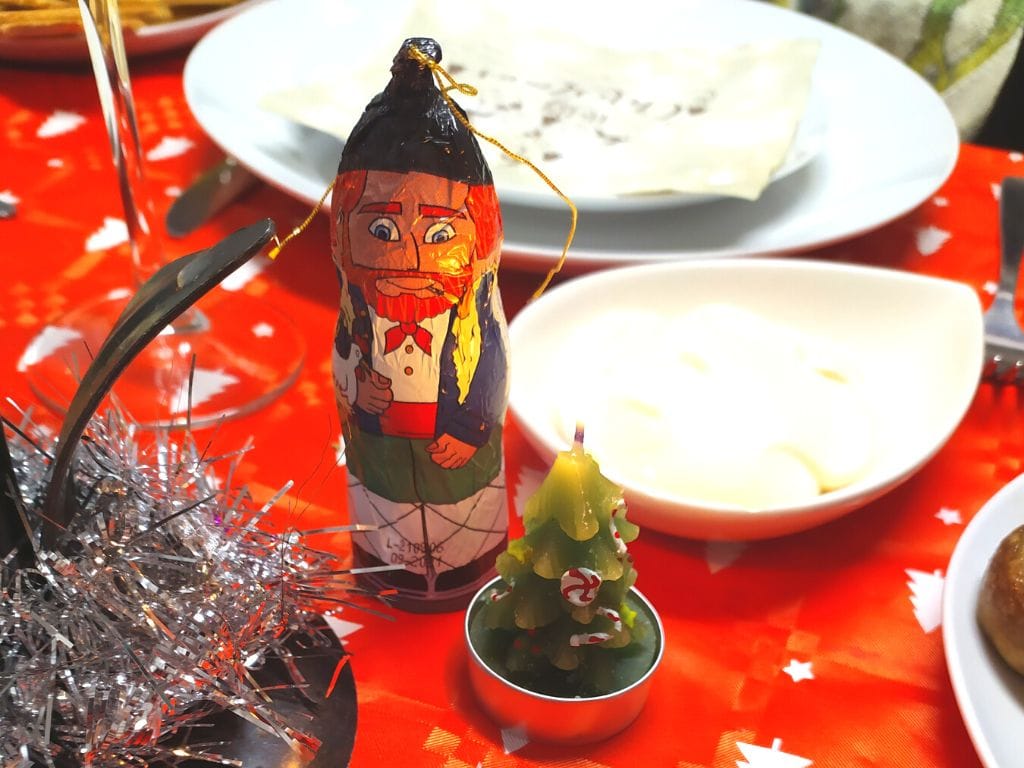Who is Olentzero? All About the Basque Christmas Legend
Who is Olentzero? What is the Olentzero story? Find out now!
During our time living in Spain, we discovered there are many distinct holiday traditions throughout the country.
It’s a joy to learn and partake in the different Christmas traditions celebrated in Spain—which includes the unique regional customs and festivities.
One of the most famous regional traditions is the coming of Olentzero. This mythical legend (Or is he?) originated in the Basque Country, a culturally rich region that spans northeastern Spain and southwestern France.
Olentzero is an integral part of Basque culture during Christmastime. Certainly, it’s easy to see why once you know a little more about him!
In this post, you’ll learn the story of Olentzero and how he became such an iconic Basque legend, as well as the traditions surrounding the “Basque Santa Claus.”
Who is Olentzero?

To put it plainly, Olentzero is the Basque equivalent of Santa Claus.
According to Basque tradition, Olentzero comes to town on Christmas Eve (December 24th) carrying a sack of presents for children over his shoulder or in his mule Napo’s baskets. In several depictions, he also brings a bag of coal for the naughty kids!
Olentzero is a jolly man with a long beard and a big belly. He wears traditional Basque farmers’ clothing including a Basque beret (txapela), blue pants, and sometimes a sheepskin cape. He also wears traditional “abarka” shoes. Oh, and he smokes from a pipe!
Olentzero is also covered in coal since he’s a charcoal maker. After all, he spends time making coal for naughty children—in addition to toys, of course!
There are different versions of the legend, but Olentzero is always portrayed as a man with a big heart. A charcoal burner from the forest, his joy is found in bringing presents to children.
Olentzero’s story is passed down from generation to generation. Without a doubt, Olentzero (the Basque Father Christmas) is a cherished part of Basque culture.
What is the Legend of Olentzero?

Just because you can’t see something doesn’t mean it isn’t real. To this point, it’s a commonly held Basque belief that if something has a name, it’s real if only you believe…
One such figure is Olentzero.
The beloved character in Basque culture lives in a cabin in the mountains of Euskal Herria (Basque Country). He’s spends his days making coal and toys while smoking his pipe.
Each Christmas Eve, Olentzero comes down from the mountains to deliver presents to children. Sometimes, he’s accompanied by a companion named Mari Domingi, who wears a Medieval Basque dress.
But, how did Olentzero become so generous?
According to the legend, Olentzero was abandoned in the woods as a newborn. Fortunately, a beautiful yellow fairy rescued him and bestowed on him the gifts of strength, courage, and love.
She then left him on the doorstep of a childless couple at the edge of the forest who happily raised him as their son. Olentzero grew up to be a man with a big heart, and he became quite lonely when his parents passed away.
There are several different accounts of exactly what happened next. Many say he made toys for the local children or provided coal for the villagers during a cold winter.
Some even say Olentzero gave his last meal to make presents for the children. This shows a great sacrifice since he was a glutton known for his love of meat and wine.
However, most agree that Olentzero was willing to sacrifice his own life to save the village children from a house fire!
Fortunately, the very same fairy was watching over him. She declared that he would not die but live forever, making presents for children all over the Basque Country.
History of Olentzero

The origins of Olentzero can be traced back to the Basque Country in the 16th century.
He was first mentioned by Lope de Isasi as “Onentzaro,” a jenillak giant in Basque mythology, who lived thousands of years prior.
Evidently, parts of the Olentzero legend are reminiscent of prehistoric cult rituals surrounding the winter solstice. Celebrated by the Basques long before the arrival of Christianity, the winter solstice was a time of feasting and celebration. It was also believed that the sun would be reborn on this day.
Perhaps the ideas behind “last meals,” sacrifices, and the rebirth of the sun lent themselves to the legend.
Yet another account said that Olentzero was the only jentillak giant living in Lesaka in the Pyrenees to embrace Christianity at the birth of Jesus. Thus, he was either left behind or spared.
In any case, the legend of Olentzero evolved to become a central figure in Basque Christmas traditions, which started gaining popularity once again in the 1950’s. Differences in the celebration are known to vary throughout the Basque Country.
What Does Olentzero Mean in English?

For all intents and purposes, Olentzero is widely believed to be the equivalent of Santa Claus in Basque mythology. However, the origins of his name differ from Santas!
While there are few hypotheses around the word Olentzero, it seems to be derived from two Basque words, “olesen” and “aroa.” Hence, Olentzero means “time of the solstice” in English. Some translations say it means “time of the good ones.”
The name Olentzero appears in a number of variations such as Onenzaro, Onentzaro, Olentzaro, Ononzaro, and Orentzago.
What is the Olentzero Song?
The Olentzero Song is a traditional Basque Christmas carol or folk song. The carols are called Olentzero kantak in Basque.
A symbol of the region’s fantastic culture and heritage, the song is typically performed at Christmas concerts and holiday events. Additionally, children sing the song as they go from door to door (often asking for candy or alms, not unlike trick or treating on Halloween in Spain).
The lyrics of the Olentzero Song (which is typically sung in Basque) vary depending on the region. Regardless, the song is best accompanied by a tambourine or other percussion instrument.
Olentzero Song Lyrics
Here is one of the versions of the Olentzero song (Source: lyricstranslate.com).
| Basque Lyrics | English Translation |
| Olentzero joan zaigu mendira lanera intentzioarekin ikatz egitera Horra, horra gure Olentzero pipa hortzetan duela eserita dago. Kapoiak ere baitu arrautzatxoekin bihar meriendatzeko botila ardoakin. Olentzero, buru handia entendimentuz jantzia, bart arratsean edan omen du hamar arruko zahagia Ai urde tripa handia! Tralala..lalalala Ai urde tripa handia! Tralala..lalalala Horra, horra gure Olentzero pipa hortzetan duela eserita dago. Kapoiak ere baitu arrautzatxoekin bihar meriendatzeko botila ardoakin. | Olentzero has went away Up to the mountain to work With an intent To make coal Come look! Come look! It’s our dear Olentzero! With a pipe between his teeth, He sits along He has also his hens With their small eggs For his tomorrow’s snack With a bottle of wine! Olentzero, he’s stubborn Yet so wise Last night, he once said: He had drank ten pints of wine Oh, he has a big belly! Tralala..lalalala Oh, he has a big belly! Tralala..lalalala Come look! Come look! It’s our dear Olentzero! With a pipe between his teeth, He sits all along He has also his hens With their small eggs For his tomorrow’s snack With a bottle of wine! |
Listen to the Olentzero Song
You can find the Olentzero song on YouTube. Listen to another popular version of the Olentzero song here ⤵
Modern Version of Olentzero Song: Ole Olentzero
Ole Olentzero is a modern song about Olentzero that has gained popularity in recent years. Listen to Ole Olentzero ⤵
Where Does Olentzero Live?
According to legend, Olentzero lives in the mountains of the Basque Country. He lives in a wooden cabin located in the heart of the forest. Some people say he’s from Lesaka in the Pyrenees.
Made of logs and a thatched roof, Olentzero’s house is decorated with Christmas lights and ornaments during the festive season.
How to Visit Olentzero’s House in Biscay

Izenaduba Basoa is a popular tourist destination for both adults and families with lots to see and do on a day trip from Bilbao.
First, you’ll find Olentzero’s home, Landetxo Goikoa. Built at the beginning of the 16th century, it’s the oldest baserri (farmhouse) in Bizkaia (Biscay)!
In the park, you’ll also find out all about Basque mythology while learning all about the customs, traditions, and beliefs of the local people who would have lived and worked in the baserris.
Olentzero’s home is in the town of Mungia, a small town in the province of Biscay. It’s a short drive from Bilbao and accessible by public transport.
You can get to Mungia by bus from Bilbao via several Bizkaibus lines, including A-3516 (Bilbao-Mungia), A-3518 (Bilbao-Mungia-Bakio), and A-3527 (Bilbao-Mungia-Bermeo).
Alternatively, you can drive to Mungia by car (Try Discover Cars for car rentals abroad). Mungia is only 12 mi (20km) away from Bilbao on road BI-631, exit to Mungia-Gatika. Parking is easily accessible.
How is Olentzero Celebrated?
The tradition of Olentzero is similar to that of Santa Claus—a jolly, unseen character bringing gifts to children at Christmas. For that reason, he’s often compared to (and celebrated alongside) Father Christmas, Santa Claus, Père Noël, and the Three Kings in Spain.
He’s sometimes even referred to as Santa’s Basque cousin!
Seeing as the legend is an essential part of Christmas in the Basque Country, many cities, villages, and towns welcome Olentzero during the holiday season.
Children eagerly await his arrival each year. It’s common for kids to write letters to Olentzero stating their Christmas wishlist. Indeed, this is similar to how some families write letters to Santa.
In many Basque cities and villages, there are parades or festivities to celebrate Olentzero’s arrival. Typically, a life-size representation of Olentzero is carried through the streets and/or a couple dressed as Olentzero and Mari Domingi greet the children.
Children dress in traditional peasant garb, singing folk songs and waiting for their chance to tell Olentzero what they want for Christmas.
On the night of December 24th, children go to sleep knowing Olentzero will drop off presents in the night. It’s customary for families to leave food and drink since Olentzero is obviously fond of eating and drinking.
He will take a few bites and/or swigs, gaining strength to continue delivering presents.
Olentzero: FAQ’s
Who is the wife of Olentzero?
While there was no mention of a wife in the traditional stories of Olentzero, modern adaptations introduced a female companion named Mari Domingi. Mari is said to have been included in other Basque Christmas Carols and was introduced as Olentzero’s counterpart around 1994.
Do Basques celebrate Christmas?
Yes, Christmas is celebrated in the Basque Country. You’ll find a number of parades and festivities going on as well as shopping, decorations, and traditional foods. Of course, they have their own celebrations too, such as the the legend of Olentzero.
How does Olentzero compare to other Christmas entities in Europe?
Olentzero is unique to Basque Christmas traditions and differs from other European Christmas figures like Santa Claus or Father Christmas. While Santa Claus is known for his jolly demeanor and flying sleigh, Olentzero is a more rugged character. For example, he is covered in coal dust, smokes a pipe, and travels on foot with his donkey.
How do you say Merry Christmas in Basque?
The phrase for “Merry Christmas” in Basque is “Eguberri on.” Learn how to say “Merry Christmas” in Spanish.
What day does Olentzero arrive?
Generally, Olentzero comes on the night of December 24th (Christmas Eve). However, he arrives as late as December 31st to some villages.
Final Thoughts on Olentzero, the Basque Santa Claus

A cherished tradition in Basque culture, Olentzero brings communities together to celebrate the joy of the Christmas season. Be sure to check out any parades or festivals happening in the Basque country if you’re visiting at Christmas!
More Holiday Traditions in Spain
Going to Spain during the holidays? Here are some related articles. ⤵
